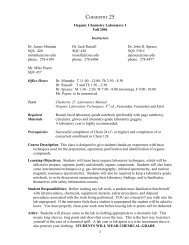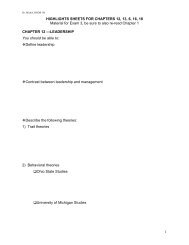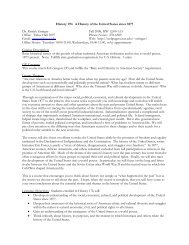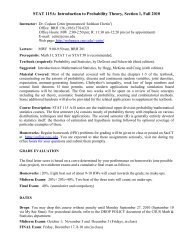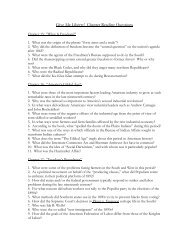final text
final text
final text
You also want an ePaper? Increase the reach of your titles
YUMPU automatically turns print PDFs into web optimized ePapers that Google loves.
39resolved, it was apparent that there were two diastereomers in the mixture. Anintegration of the two diastereomeric peaks from the isothermal 115° C GC run(Figure 29) provides a way to calculate the ratio of diastereomers. The ratio ofdiastereomers was calculated to be 63:36, according to these GC conditions. Asimilar integration of the two diastereomeric peaks from the isothermal 105° C GCrun revealed a diastereomeric ratio of 59:41. From these results it is shown thatthe acetate analog of the epoxide can be separated by using an EC-WAX GCcolumn using isothermal temperature runs, but that the pivalate epoxide wouldprove to be more difficult to characterize.Figure 30. Integration of GC/MS peak corresponding to (3S,6RS)-6,7-Epoxycitronellylacetate isothermal 115 °CFigure 31. Integration of GC/MS peak corresponding to (3S,6RS)-6,7-epoxycitronellylacetate isothermal 105 °CAsymmetric Synthesis of (3S,6S)-6,7-EpoxycitronellylPivalateSynthesis of this compound would show whether or not this was a viablesynthetic route for the California Red Scale pheromone. The reaction wascomplete after one day and monitored by the disappearance of the GC-MS peak



